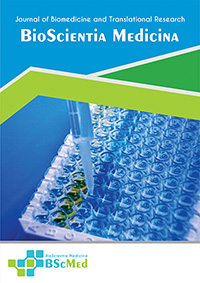Main Article Content
Abstract
Background: The ingestion of sharp foreign bodies (FBs) in adolescents presents a critical management dilemma, balancing conservative observation against the risk of gastrointestinal perforation. In certain cultural contexts, the accidental ingestion of straight pins used for hijabs creates a unique patient cohort. This study aims to illustrate the practical, guideline-based application of divergent management strategies in these specific clinical scenarios.
Methods: We conducted a retrospective case series of five female adolescents, aged 13 to 15 years, managed at a single tertiary center for accidental straight pin ingestion. Data on clinical presentation, radiological findings, management strategy (conservative versus endoscopic), and outcomes were extracted and analyzed. Management decisions were dictated by established international guidelines.
Results: Three asymptomatic patients (60%) with pins located distal to the duodenum were managed conservatively and experienced spontaneous passage within 2-4 days. Two patients (40%) required therapeutic endoscopy. One underwent emergent removal for a proximally located pin causing respiratory symptoms. The other, despite being asymptomatic, underwent urgent intervention due to the development of a radiological "sentinel loop" and rising inflammatory markers, which revealed an impacted duodenal pin. No complications occurred in any patient.
Conclusion: This series demonstrates that while active surveillance is a safe strategy for asymptomatic patients with distally located sharp FBs, clinical silence does not preclude impending complications. Subtle radiological findings, such as a sentinel loop, are crucial indicators that must prompt timely endoscopic intervention to prevent morbidity. The educational value lies in highlighting these critical decision-making triggers.
Keywords
Article Details
As our aim is to disseminate original research article, hence the publishing right is a necessary one. The publishing right is needed in order to reach the agreement between the author and publisher. As the journal is fully open access, the authors will sign an exclusive license agreement.
The authors have the right to:
- Share their article in the same ways permitted to third parties under the relevant user license.
- Retain copyright, patent, trademark and other intellectual property rights including research data.
- Proper attribution and credit for the published work.
For the open access article, the publisher is granted to the following right.
- The non-exclusive right to publish the article and grant right to others.
- For the published article, the publisher applied for the Creative Commons Attribution-NonCommercial-ShareAlike 4.0 International License.





